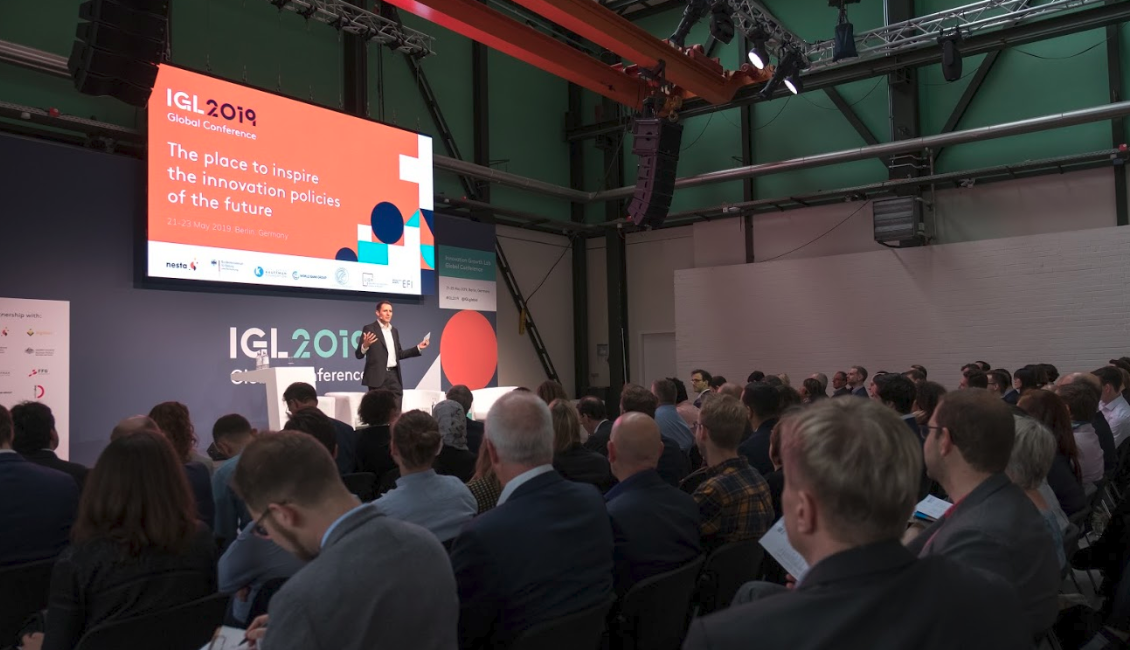
Blog
IGL2019: Understanding the people of innovation policy making
10 June 2019
New ideas in innovation policymaking often seek to improve the process of discovering and measuring innovation, as well as challenge our understanding of the comparative benefits of existing approaches for the economy and society. IGL2019 speakers offered an important additional thread, sharing insights on how innovation agencies could spot, develop and support the people behind the policymaking process.
Here are three takeaways from across the conference:
- Organisations can’t produce innovation, only (mission-oriented) individuals can.
How do some of the most successful private and public sector organisations across the US and Europe deliver incredible innovations? “Seek out the believer”, recommends Norbert Luetke-Entrup of Siemens. People with a sense of personal mission persevere despite high likelihood of failure, and don’t need layers of organisational bureaucracy to perform, as they are intrinsically motivated and hold themselves to account for achieving their goals.
Passion was also named as the key characteristics of DARPA’s (The Defense Advanced Research Projects Agency) project managers, described by Professor Erica Fuchs, who researched their practices at Carnegie Mellon University. In their role the project managers are tasked with finding and supporting promising ideas and technologies, and stacking them together to orchestrate the creation of the final breakthrough product. To do so, they need great vision, understanding of the technical aspects of the idea, as well as flexibility to adjust direction when needed.
- Empowerment and adaptability are common principles in effective innovation agencies
Individuals with ideas must have the right kind of environment around them to find ways for their ideas to succeed. As much as it is tempting to create a “silver bullet” prototype of organisational structure and practices, there is not actually a single approach that guarantees radical innovation.
However, in the discussion of the potential effective models that innovation agencies could adopt (offered both by Piret Tõnurist and Erica Fuchs), there was a common theme of empowering participants of innovation, both at the design stage – for example, in experimenting with research ideas – and during “production” – when making a decision on which ideas to invest in and how.
This insight was also supported by the research findings presented at the Policy and Practice Learning Lab session on improving research productivity. After studying 1700 PhD engineers, Henry Sauermann found those motivated by challenges and independence perform best overall resulting in more patents.
- Innovation should be a democratic process
With so much emphasis on the empowerment of mission-oriented individuals with ideas, there was a natural question of how innovation agencies might ever be able to narrow down a set of high-level strategic priorities. In response to this, speakers highlighted the importance of humility among leaders and funders, who must recognise that they might not have the evidence and understanding of the problem to judge the quality and potential impact of ideas themselves. Often, organisations have introduced ways to involve more people in the process of generating and selecting ideas.
Siemens, for example, have introduced crowdfunding challenges for their employees to spark new ideas, and run a “risky project fund” that supports projects that teams deem too risky to include in the main portfolio of work. This theme of increasing the ideas pool is also echoed in experimental evidence from Coen Rigtering & Utz Weitzel’s study, funded through the IGL Grants Programme, which found that lowering the barrier for people to submit their innovative ideas did not diminish their overall quality, suggesting that organisations may be missing out on valuable ideas if they do not open the process up to more people.
The growing interest in mindset and skills of innovators and innovation leaders, as well as team and organisational structures that make them successful are being explored in Nesta’s horizon scan of innovation management trends, started earlier this year. The next stage of work will collect and report insights from innovation leaders and the wider innovation community – and we look forward to sharing our findings at IGL2020.
